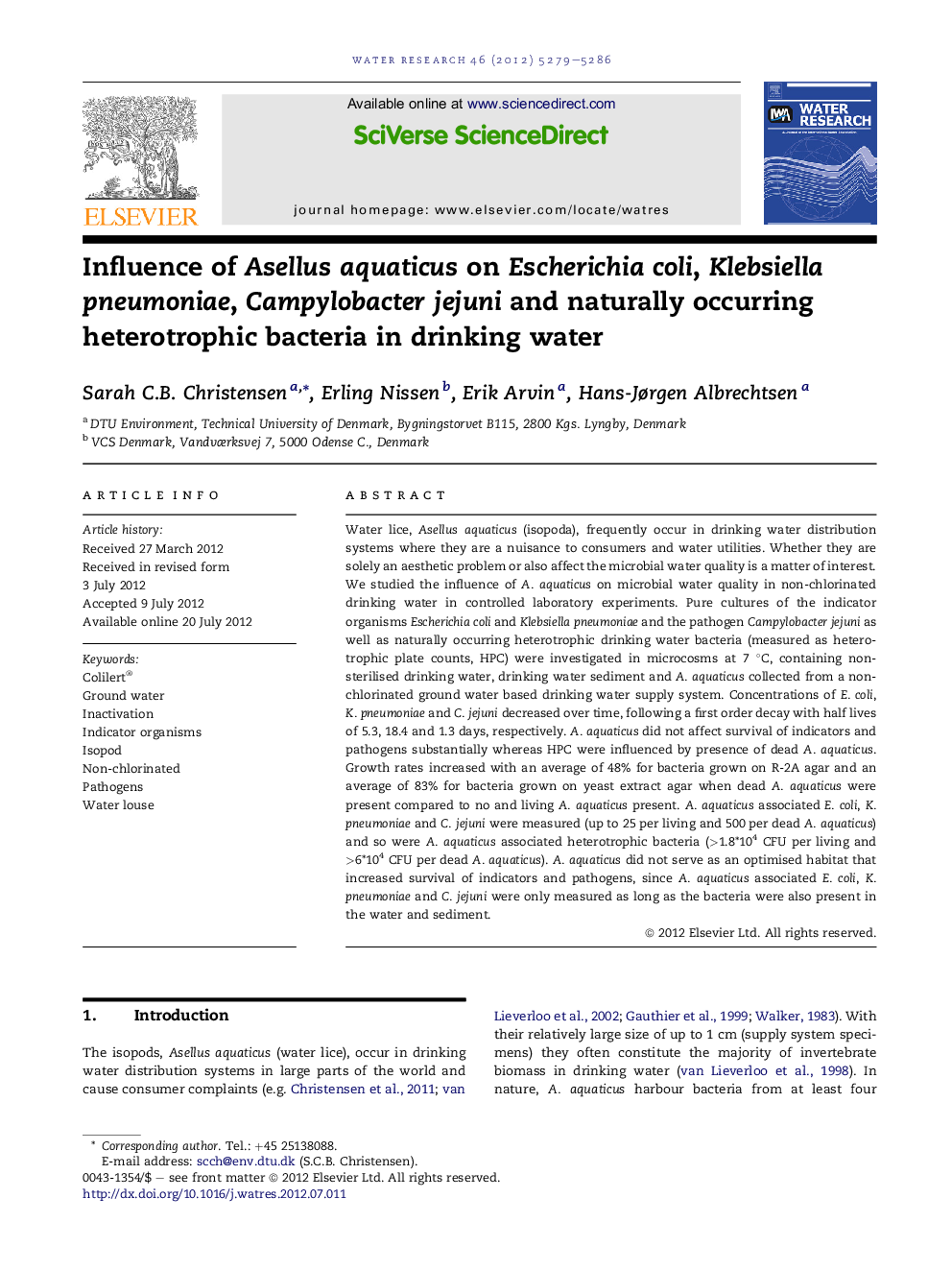| کد مقاله | کد نشریه | سال انتشار | مقاله انگلیسی | نسخه تمام متن |
|---|---|---|---|---|
| 4482754 | 1316868 | 2012 | 8 صفحه PDF | دانلود رایگان |

Water lice, Asellus aquaticus (isopoda), frequently occur in drinking water distribution systems where they are a nuisance to consumers and water utilities. Whether they are solely an aesthetic problem or also affect the microbial water quality is a matter of interest. We studied the influence of A. aquaticus on microbial water quality in non-chlorinated drinking water in controlled laboratory experiments. Pure cultures of the indicator organisms Escherichia coli and Klebsiella pneumoniae and the pathogen Campylobacter jejuni as well as naturally occurring heterotrophic drinking water bacteria (measured as heterotrophic plate counts, HPC) were investigated in microcosms at 7 °C, containing non-sterilised drinking water, drinking water sediment and A. aquaticus collected from a non-chlorinated ground water based drinking water supply system. Concentrations of E. coli, K. pneumoniae and C. jejuni decreased over time, following a first order decay with half lives of 5.3, 18.4 and 1.3 days, respectively. A. aquaticus did not affect survival of indicators and pathogens substantially whereas HPC were influenced by presence of dead A. aquaticus. Growth rates increased with an average of 48% for bacteria grown on R-2A agar and an average of 83% for bacteria grown on yeast extract agar when dead A. aquaticus were present compared to no and living A. aquaticus present. A. aquaticus associated E. coli, K. pneumoniae and C. jejuni were measured (up to 25 per living and 500 per dead A. aquaticus) and so were A. aquaticus associated heterotrophic bacteria (>1.8*104 CFU per living and >6*104 CFU per dead A. aquaticus). A. aquaticus did not serve as an optimised habitat that increased survival of indicators and pathogens, since A. aquaticus associated E. coli, K. pneumoniae and C. jejuni were only measured as long as the bacteria were also present in the water and sediment.
Figure optionsDownload high-quality image (131 K)Download as PowerPoint slideHighlights
► Survival of Campylobacter in drinking water was not affected by Asellus aquaticus.
► Survival of indicator bacteria in drinking water was not affected by A. aquaticus.
► Drinking water bacteria formed physical associations with A. aquaticus.
► Pathogens and indicators only formed temporary associations with A. aquaticus.
Journal: Water Research - Volume 46, Issue 16, 15 October 2012, Pages 5279–5286